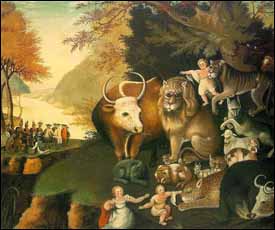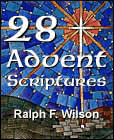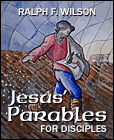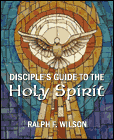Free E-Mail
Bible Studies
Beginning the Journey (for new Christians). en Español
Old Testament
Abraham
Jacob
Moses
Joshua
Gideon
David, Life of
Elijah
Psalms
Songs of Ascent
(Ps 120-135)
Isaiah
Advent/Messianic Scriptures
Daniel
Rebuild & Renew: Post-Exilic Books
Gospels
Christmas Incarnation
(Mt, Lk)
Sermon on the Mount
(Mt 5-7)
Mark
Luke's
Gospel
John's Gospel
7 Last Words of Christ
Parables
Jesus and the Kingdom
Resurrection
Acts
The Early Church
(Acts 1-12)
Apostle Paul
(Acts 12-28)
Paul's Epistles
Christ Powered Life (Rom 5-8)
1 Corinthians
2 Corinthians
Galatians
Ephesians
Vision for Church
(Eph)
Philippians
Colossians,
Philemon
1
& 2 Thessalonians
1 & 2 Timothy,
Titus
General Epistles
Hebrews
James
1 Peter
2 Peter, Jude
1, 2, and 3 John
Revelation
Revelation
Conquering Lamb of Revelation
Topical
Glorious Kingdom, The
Grace
Great Prayers
Holy Spirit, Disciple's Guide
Lamb of God
Listening for God's Voice
Lord's Supper
Names of God
Names of Jesus
Christian Art
About Us
Speaking
Contact Us
Dr. Wilson's Books
Donations
Watercolors
Sitemap
Day 13. The Peace of the Messiah (Isaiah 11:6-10)
Friday, Second Week of Advent
 The lion shall lie down with the lamb in Messiah's Kingdom, Isaiah prophesied (Isaiah 11:6). Detail from Edward Hicks (American Quaker painter, 1780-1849), 'The Peaceable Kingdom' (c. 1834), oil on canvas, 74.5 x 90.1 cm., National Gallery of Art, Washington DC. |
Read again in the Bible: Isaiah 11:1-10
We conclude these three readings from Isaiah's prophecy of the Messiah with a vision of the peace he will bring.
The result of the power and righteousness of his Messianic rule will be peace. In this famous passage, Isaiah expresses what peace will look like, using the animal kingdom as his word pictures. Natural enemies will live in absolute peace with each other in the Messianic age.
"6 The
wolf will live with the lamb,
the leopard will lie down with the goat,
the calf and the lion and the yearling together;
and a little child will lead them.
7 The cow will feed with the
bear,
their young will lie down together,
and the lion will eat straw like the ox.
8 The infant will play near
the hole of the cobra,
and the young child put his hand into the viper's nest.
9 They will neither harm nor
destroy on all my holy mountain." (Isaiah 11:6-9a)
Predators (Isaiah 11:6-8)
In Bible times, a number of dangerous predators roam the hills and valleys of Palestine. Shepherds keep close watch; so do parents.
- Wolves are on a constant prowl for sheep that have strayed.61
- Leopards are active from dusk to dawn, solitary animals, lightning-fast hunters with an acute sense of hearing.62
- Lions are the most feared carnivores, hunting day and night, often in groups.63
- Bears are found primarily near the forests and woods. Large, ferocious, they have no natural predators.64
- Venomous snakes are small but deadly, with no treatment for their venom in Bible times. While they don't attack humans as prey, they strike when threatened. Children are especially vulnerable because they might play near an unseen snake's nest unaware of the danger.65
Prey (Isaiah 11:6-8)
Those are the predators. On the other hand, we are told of their prey who are no match for the power, speed, and cunning of those that hunt them. First, we see domestic animals.
- The lamb.
- The goat.
- The calf.
- The cow.
- The ox.66
They graze unaware of danger, indefensible when it comes swiftly and mercilessly upon them. Then there are the little ones:
- The little child.
- The nursing child, still a toddler
- The weaned child of perhaps four or five.67
They know nothing of danger, but suddenly feel the intense pain and paralysis brought about by a snake's venom.
Neither Harm nor Destroy (Isaiah 11:9a)
In Messiah's Kingdom, the prophet tells us, the predators are utterly changed from being cunning carnivores to eating straw68 with cattle, their former prey. Domestic animals lie alongside former enemies.
I am a biologist by training. And the biologist in me wonders how God changes an obligate carnivore like a lion or leopard into an herbivore? Are there alterations in the chemistry of digestion? I am missing the point by trying to be too literal. These animals are parables, symbols of the absolute change God will make in our world when Messiah reigns. In a word, the strong will no longer prey on the weak. There is peace at last.69
"They will neither harm nor destroy70
on all my holy mountain." (Isaiah 11:9a; cf. Isaiah 65:25)
Verse 9 sums up the peace "on all my holy mountain" -- which sounds like the whole earth. After the Fall, corruption and evil had their way. Survival of the fittest was the order of the day, but it was not always so. After the Fall there were wars -- terrible destructive wars with slaughter, rape, and burning, with long trains of prisoners of war marched off to the victorious country to face lifelong slavery. But no more. On the Day of the Messiah,
"They will beat their swords into plowshares
and their spears into pruning hooks.
Nation will not take up sword against nation,
nor will they train for war anymore." (Isaiah 2:4; Micah 4:3)
On the Day of the Messiah, the order changes back to its Eden principles once again. The prophet Hosea has heard the same word from the Lord.
"Bow and sword and battle I will abolish from
the land,
so that all may lie down in safety." (Hosea 2:18)
There will be no more harm, no more genocide, no more bullying or corruption or ruin or destruction, because Jesus reigns.
The Knowledge of the Lord (Isaiah 11:9b-10)
The cause of that abiding peace is the pervasive "knowledge of the Lord."
"... For the earth will be full
of the knowledge of the LORD
as the waters cover the sea." (Isaiah 11:9b; cf. Habakkuk 2:14)
Here the prophet speaks of a personal relationship with the Lord, not just an intellectual awareness of him. The waters of the sea cover all sorts of things -- underwater troughs and mountains -- but the ocean covers them all at sea level the world round. So it will be in the Day of the Messiah.
In that Day,
"No longer shall each one teach his neighbor
and each his brother,
saying, 'Know the LORD,'
for they shall all know me,
from the least of them to the greatest,
declares the LORD." (Jeremiah
31:34)
"And at the name of Jesus every knee should
bow,
in heaven and on earth and under the earth,
and every tongue confess that Jesus Christ is Lord,
to the glory of God the Father." (Philippians 2:10-11)
Jesus will be there.
"In that day the Root of Jesse will stand
as a banner for the peoples;
the nations will rally to him,
and his place of rest will be glorious." (Isaiah 11:10)
My mind goes to the longing of that old Gospel hymn:
"Oh, I want to see him, look upon his face,
there to sing forever of his saving grace;
on the streets of Glory let me lift my voice;
cares all past, home at last, ever to rejoice."71
Come soon, Lord Jesus!
Knowing You
 Also available in book formats: PDF, Kindle, and paperback. |
Dear friend, the final goal of Christ's coming is the ultimate reconciliation of God and man when we shall see him as he is (1 John 3:2). To know the Lord now, in our time, requires a leaving behind, a pressing in, a patient waiting and listening. In the words of an African American spiritual that draws on Isaiah 26:2.
"I woke up this morning with my mind -- stayed72 on Jesus."
My prayer for you is that you won't wait until glory to know him and let his joy flood you and his peace anchor your life. Messiah can bring that to you today by his Spirit as you seek him. Then you too can be a source of peace radiating to others. "Blessed are the peacemakers, for they shall be called sons of God" (Matthew 5:9).
Prayer
Lord, it seems like every day we see news of wars and rumors of wars. There is political strife, racial strife, economic strife, marital strife. Sometimes that strife comes very, very close to home. Jesus, we long for your peace, for that time when you will defeat the destroyer and make all things new. We long for that time. Give us patience as we look forward to your coming. In your mighty name, we pray. Amen.
Discussion Question
Q13. (Isaiah 11:6-10) Where is love most at home -- in
times of strife or in times of peace? What does our passage say about the
emptiness of winning as our ultimate value? How can you bring peace from Jesus
in your world? Who will it bless?
https://www.joyfulheart.com/forums/topic/2087-q13-peace/
Endnotes
[61] The Arabian Wolf (Canis lupus arabs) is native to southern Israel, southern and western Iraq, Oman, Yemen, Jordan, Saudi Arabia and probably some parts of the Sinai Peninsula. He is a small, "desert-adapted" wolf about 2.2 ft. (66 cm.) tall and weighs about 40 pounds (18 kg.). Its fur coat is short in the summer, long in the winter. (Wikipedia, "Subspecies of Canis lupus," retrieved 26 Dec 2020).
[62] The Arabian leopard (Panthera pardus nimr) is native to the Arabian Peninsula but is considered extinct in Palestine and the Sinai Peninsula, though leopards once roamed over much of Asia and Africa. It is the smallest of the leopard subspecies. The leopard has short legs and a relatively long body compared to other cats and is known for its spots. It can run at up to 36 miles per hour (58 kilometers per hour). Leopards living in desert areas are paler than their cousins in forested areas.("Leopard," Wikipedia, retrieved 27 Dec 2020).
[63] The Asiatic lions of ancient Palestine (Panthera leo leo) were fierce carnivores that were found also in Syria, Asia Minor, Greece, Mesopotamia, and northwest India, now extinct in Palestine ("Lion," Wikipedia, retrieved 28 Dec 2020). Kepîr is "young lion" (TWOT #1025a).
[64] The Syrian brown bear (Ursus arctos syriacus) is a rather small brown bear. It is now extinct in Israel, but in 2004 and 2011 brown bear tracks were seen in the Anti-Lebanon Mountains ("Syrian Brown Bear," Wikipedia, retrieved 28 Dec 2020).
[65] "Cobra" (ESV, NIV, NASB), "asp" (NRSV, KJV) is peten, "venomous serpent, perhaps cobra" (TWOT #1858a); "African cobra or asp (Naja haje). (Other: horned viper" Cerastes cornutus)" (Holladay, p. 301). "Adder" (ESV, NRSV), "viper" (NIV), "cockatrice" (KJV) is tsephaʿ, "poisonous serpent, snake, viper" (Holladay, p. 310). The exact identification of vipers in the Scriptures is difficult since many of the references occur in figurative or prophetic contexts (G. L. Knapp, "Viper, ISBE 4:989). Israel currently has several species of venomous snakes: (1) The Palestine Viper (Daboia palaestinae, sometimes referred to as Vipera xanthina palaestinae) is the leading cause of snakebite in modern-day Israel and grows to 28 to 35 inches (70 to 90 cm.). It is currently found in northern and central Israel, Palestine, western Syria, northwestern Jordan, and Lebanon. (2) The Israeli Mole Viper (Atractaspis engaddensis) is found in Israel, Jordan, the Sinai, Saudi Arabia, and Lebanon. It is dark black, about 2 to 2.6 feet (60 to 80 cm.) long. It is difficult to distinguish its head from its tail. Its fangs are directed outside of its mouth, granting it the ability to side stab. Bites from other venomous snakes in the area are less common. (3) The Painted Saw-Scaled Viper (Echis coloratus) is found in rocky desert areas in Sinai, Israel and Jordan. (4) Field's Horned Viper (Pseudocerastes fieldi) is found in the Sinai, Israel, Jordan, northern Saudi Arabia, northwestern Iraq and possibly in southern Syria. (5) The Horned Desert Viper (Cerastes cerastes) found in Iraq, but also Syria, Saudi Arabia, Yemen, Jordan, Israel, in Lybia, Egypt, Sudan. (6) The Desert Black Snake or Cobra (Walterinnesia aegyptia) is found in Egypt, Lebanon, Jordan, Israel, Saudi Arabia, Kuwait, and Syria. It is highly venomous. It doesn't inject its toxin immediately, but seconds later with a chewing movement (Wikipedia articles).
[66] "Lamb" is kebeś, "lamb, sheep" (TWOT #949). "Goat" is gedî, "kid, young goat" (TWOT #314b). "Calf" is ʿēgel, "(bull-) calf" (TWOT 1560a). "Yearling" (NIV), "fattened calf" (ESV), "fatling" (NRSV, KJV) is merîʾ, "fatling" (TWOT #1239a); "fattened cattle" (i.e., cattle raised for meat; Holladay, p. 215), from the verb, mārāʾ II, "to be fat, well-fed" (BDB 597). "Cow" is pārâ, "heifer, cow" (TWOT #1831g). "Lion" is ʾarî, "lion" (TWOT #158a). "Ox" is bāqār, "cattle, herd, ox." Though bāqār refers to draught animals such as oxen, the term is used for domestic cattle, including bulls, cows, heifers, and calves (TWOT #274a).
[67] "Little child" is naʿar, "boy, youth, servant" (TWOT #1389a). "Infant" (NIV), "nursing child" (ESV), "suckling child" (KJV) is yônēq, "suckling," from the verb yānaq, "suck, nurse" (TWOT #874a). "Young child" (NIV), "weaned child" (ESV, NRSV, KJV) is the Qal participle of gāmal, "to wean a child" (TWOT #360).
[68] "Straw" is teben, "chopped stalks, straw (as fodder)" (Holladay, p. 386; (TWOT #2493).
[69] There is a similar passage in Isaiah 65:25 of this kind of peace.
[70] "Harm" (NIV), "hurt" (ESV, NRSV, KJV) is the Hiphil imperfect of rāʿaʿ, "be bad, evil" (TWOT #2191), Hiphil, "do evil, behave objectionably, hurt, injure, harm, cause damage" (Holladay, p. 343). "Destroy" is the Hiphil imperfect of shāḥat, "destroy, corrupt" (TWOT #2370), Hiphil, "spoil, ruin, wipe out" (Holladay, p. 366-367).
[71] R. H. Cornelius, "Oh, I Want to See Him" (1916)
[72] Isaiah 26:3.
Copyright © 2024, Ralph F. Wilson. <pastor![]() joyfulheart.com> All rights reserved. A single copy of this article is free. Do not put this on a website. See legal, copyright, and reprint information.
joyfulheart.com> All rights reserved. A single copy of this article is free. Do not put this on a website. See legal, copyright, and reprint information.
 |

|
In-depth Bible study books
You can purchase one of Dr. Wilson's complete Bible studies in PDF, Kindle, or paperback format -- currently 48 books in the JesusWalk Bible Study Series.
Old Testament
- Abraham, Faith of
- Jacob, Life of
- Moses the Reluctant Leader
- Joshua
- Gideon
- David, Life of
- Elijah
- Psalms
- Solomon
- Songs of Ascent (Psalms 120-134)
- Isaiah
- 28 Advent Scriptures (Messianic)
- Daniel
- Rebuild & Renew: Post-Exilic Books
Gospels
- Christmas Incarnation (Mt, Lk)
- Sermon on the Mount (Mt 5-7)
- Luke's Gospel
- John's Gospel
- Seven Last Words of Christ
- Parables
- Jesus and the Kingdom of God
- Resurrection and Easter Faith
Acts
Pauline Epistles
- Romans 5-8 (Christ-Powered Life)
- 1 Corinthians
- 2 Corinthians
- Galatians
- Ephesians
- Philippians
- Colossians, Philemon
- 1 & 2 Thessalonians
- 1 &2 Timothy, Titus
General Epistles
Revelation
Topical
